Sell These 5 Risky Funds Luring Investors Looking For High Yields
 I receive a lot of questions concerning the different investments on closed-end funds (CEFs); particularly the category of high yield investment types. A lot of investors see the yields and monthly dividends and decide to jump into CEFs without understanding what they are buying.
I receive a lot of questions concerning the different investments on closed-end funds (CEFs); particularly the category of high yield investment types. A lot of investors see the yields and monthly dividends and decide to jump into CEFs without understanding what they are buying.
You can find several danger signals that will tell when to stay away from particular funds. Today I will discuss one such signal.
A closed-end fund is an actively managed investment portfolio whose shares trade on one of the stock exchanges. The closed part comes about because after an initial IPO a fund’s sponsor does not issue new shares.
The amount of capital in a CEF only changes by the investment results and dividends paid.
These funds cover the gamut of investment types. Tax-free municipal bonds funds are a popular category.
The CEF Connect website shows 83 municipal bond focused CEFs. Taxable income funds cover a wide range of fixed income investment types including convertible bonds, high-yield bonds, preferred stock funds and senior loan funds.
The website shows 144 funds in taxable income category. U.S. Equity has 13 sub-categories including sectors such as MLPs, commodities, real estate and health/biotech. This category includes 134 funds.
Lastly, there are the non-U.S. funds, with global funds and area specific funds. You will find 70 CEFs in this group.
With this broad mix of investment types and very loose rules governing the category, there are a lot of ways a poorly managed CEF can lead to investor losses.
In this article, I cover one danger signal related to the basic nature of a closed-fund. Since a fund’s sponsor won’t redeem shares, and the shares only trade on the stock exchange, it is common for CEF’s to trade at premiums or discounts to their net asset values or NAV.
The NAV is the real value of a share if the fund was liquidated and the proceeds paid out to share owners. If you buy a CEF trading at a discount, you are paying less than the share is currently worth.
Paying a premium means you are paying more than the current real value.
Here are five closed-end funds trading at big premiums to NAV. There is no reason to buy one of these and if you own one, a collapsing premium would cost you money even if the fund is performing satisfactorily.
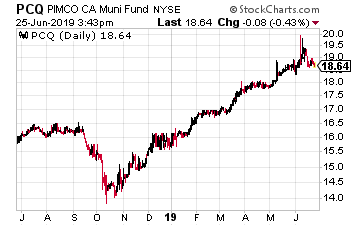
PIMCO California Municipal Income Fund (PCQ) seeks to provide current income exempt from federal and California income tax.
Since October 2018, the premium on PCQ shares has expanded from under 11% to the current 34.3%. A return to the previous premium would offset five years of the current 4.9% tax free yield.
I guess California based investors really don’t want to pay taxes!
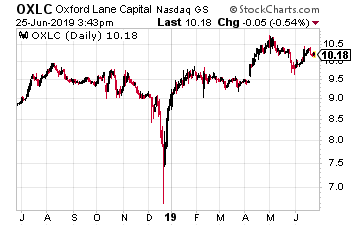
Oxford Lane Capital Corp. (OXLC) is a senior loans fund that seeks to achieve its investment objective of maximizing risk-adjusted total return by investing in debt and equity tranches of CLO vehicles.
Investors are attracted to this fund due to the 15% distribution yield.
OXLC is a CEF that could be the poster child for closed end fund dangers, and the 34.8% premium to NAV is just one of the problems with this CEF.
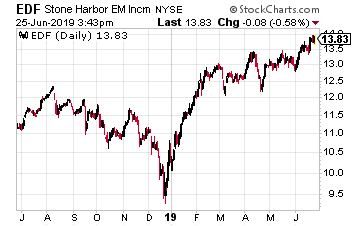
Stone Harbor Emerging Markets Income Fund (EDF) primary investment objective is to maximize total return, which consists of income on its investments and capital appreciation.
The fund will normally invest at least 80% of its net assets Emerging Markets Securities.
In regular speak, this is an emerging markets debt securities fund. It owns bonds issued by countries such as Argentina, Indonesia, Russia and Ghana.
The fund launched in 2010 and has produced an average 2.8% annual return on NAV. Not a good reason to justify the 15% distribution yield or 35.4% premium to NAV.
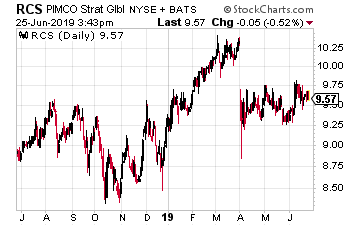
PIMCO Strategic Income Fund (RCS) seeks high current income with capital appreciation through investments in global sovereign debt securities.
Despite the “global” in its stated investment goals, the fund has over half its assets in Fannie Mae mortgage backed securities.
While most CEFs limit themselves to 25% to 30% leverage, this fund is 67% leveraged, doubling the equity with borrowed money.
I see a time bomb when interest rates start to rise. RCS currently trades at a 35.5% premium to NAV.
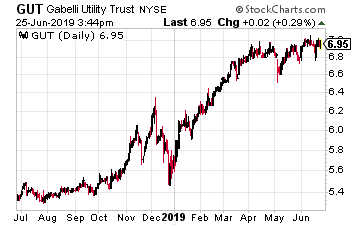
Gabelli Utility Trust (GUT) invests primarily in foreign and domestic companies involved in providing products, services, or equipment for the generation or distribution of electricity, gas, water, and telecommunications services.
The primary claim to fame is the fund is run by celebrity investment manager Mario J. Gabelli, CFA.
Neither his management, the 6.78% 5-year average annual return nor the 8.6% yield justify this fund’s 37.8% premium to NAV.
“My Wife and I Are Living Off the Endless Income Payments”
You are missing out…
You could be making monthly dividend payments of $4,587, $3,470, and $5,012 or more deposited into your account like clockwork.
If you have doubts, I don’t blame you.
People tell me all the time that this strategy will not work for them…
Heck, that’s what Tom and Gayle H. said when they first started following my recommendations.
But now, two years later, they’re true believers:
“I have had great success investing my retirement nest egg using your Endless Income Blueprint. [Since joining] my wife and I are living off of the payments… thank you from two very grateful subscribers.”
You can be just like them.
All you need is a Blueprint.
Category: Closed-End Funds (CEFs)




